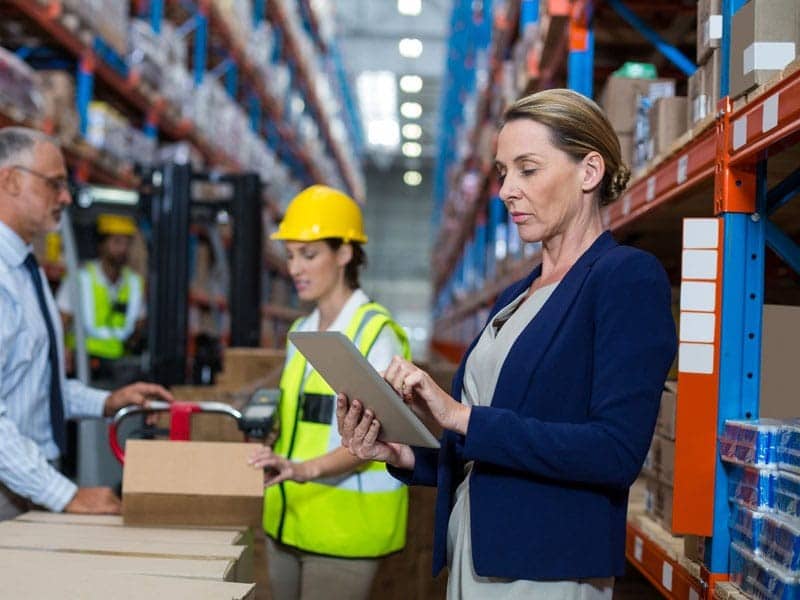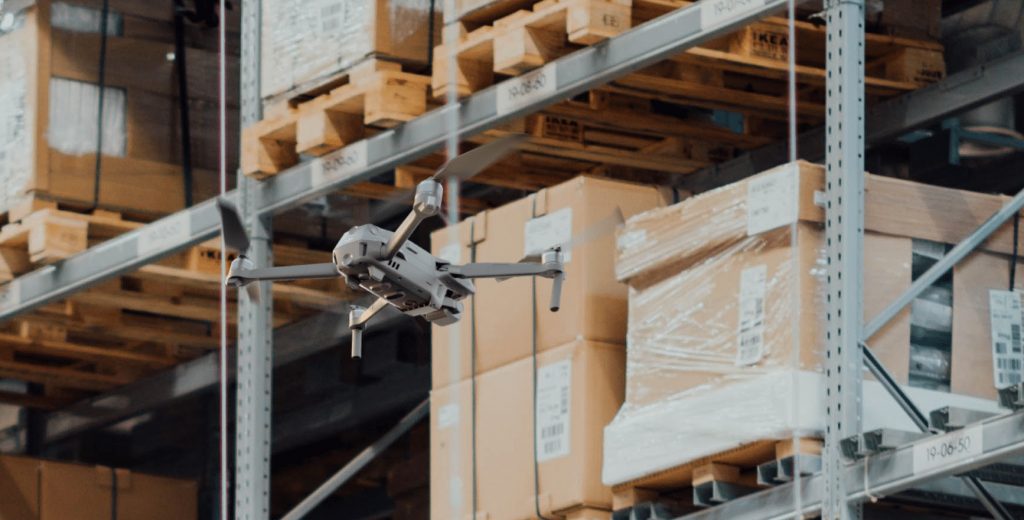Automation is turning out to be the primary driver of operational efficiencies in warehouse inventory management, driven by increasing supply chain velocity and inventory turnover rates.
Robotic techniques for stocktaking are steadily replacing manual stocktakes, especially for larger warehouses and distribution centers.
Aerial robots i.e. drones are probably the most suitable for stocktaking, given their flexibility, scalability, cost-effectiveness, and availability to be on-demand as per the business drivers.
Stocktaking Procedures
As a business process, stocktaking is done on a highly regular basis at most logistics facilities – driven by internal as well as external factors.
Counting and locating inventory accurately helps improve space utilization and fulfillment metrics, while quarterly and annual stocktakes provide data that is crucial for regulatory reporting.
3PL service providers must conduct stocktakes at a frequency mandated by their customers, while publicly listed companies must do them as required by their auditors. In fact, there are various nuances to stock-taking, such as:
- Looking for a specific SKU to fulfill an urgent order
- Checking whether yesterday’s put-aways were correctly done
- Scheduling stock-takes to account for expiration dates of perishable goods
- Increasing the stock-taking frequency during peak seasons
- Sharing inventory data with remote stakeholders for analytics
- Using near-real-time inventory counts to support ‘same-day delivery’ operations in the e-commerce context

Stocktaking using Drones
The introduction of drones for stocktaking in logistics and supply chains could be potentially game-changing.
Since location-wise physical inventory has to be continuously scanned to update its digital twin (as reflected in the warehouse management system) – substantial investment has to be made in terms of time, labor, and expense for the same.
Manual methods for stocktaking could be erroneous, prone to harm, and require expenditure on overtime, not to mention frequent shutdowns and the possibility of pilferage.
Drones, on the other hand, offer an innovative, efficient, automated alternative to stocktaking.
Equipped with autonomous navigation, artificial intelligence, and computer vision techniques, inventory drones for stocktaking enable faster, frequent, cheaper, and safer cycle counts.
Numerous warehousing facilities have already employed drones via proof-of-concept and pilot projects to test their feasibility and validate the business case for aerial inventory scans.
By configuring such solutions to suit the specific stocktaking requirements of each facility, they can be seamlessly integrated with existing warehouse operations and IT systems.
Technical & Operational Considerations for Stock-taking Drones
Unmanned aerial vehicles (UAVs) are primarily designed for outdoor use, with GPS data serving as the primary input for navigation. Indoor use of drones in large facilities such as warehouses & DCs tends to suffer from weak/no GPS availability – making navigation a technical challenge.
Worse, drones need to navigate narrow aisles, tall racks, obstacles such as columns & overhead lights, people, forklifts, etc. – further complicating the ability to precisely navigate with the purpose of scanning inventory.
Stock-taking drone solutions must be adaptable, flexible, and customizable – given the variety of warehouse layouts, aisle widths, rack heights, barcode sizes & formats, pallet overhangs, and warehouse management systems.
Even the operational metrics are likely to differ from one logistics facility to another – for example, a 3PL facility may be focused on customer SLAs and space utilization while a BCO e-commerce facility may prioritize high-frequency cycle counts and auditable inventory records.
Importance of Fully Autonomous Drones for Stock-takes
There are several aspects of drone solutions deployed for automated stock-taking, such as:
- Indoor navigation of drones inside and across aisles
- Take-off and landing of drones from their home locations
- Battery charging before, during and after stock-taking missions
- Reading barcodes, QR codes and other machine-readable, front-facing labels
- Mission scheduling and launch
- Data processing & updation of warehouse management systems
It turns out that warehouse stakeholders consistently emphasize ‘full autonomy’ as the single most important consideration for choosing and deploying drones for stock-takes.
This is driven by the reality that closing off aisles for inventory counts has an adverse impact on warehouse pick-and-place operations; instead, warehouse inventory managers would rather use night shifts, off-hours, holidays, and other low-activity time slots to deploy fully autonomous drone solutions.
Adoption of Stocktaking with Drones
As with any emerging technology, there was initially some reluctance on the part of stakeholders to adopt drones into existing warehouse workflows.
This was driven not only by the capital expenditure involved but also the reliability and degree of autonomy of such solutions.
It turns out though that cost-effective, scalable solutions can be built to deploy drones for stocktaking by combining off-the-shelf hardware and intelligent automation software that is open in architecture.
Automated drone fleets can thus be deployed at warehouses for automating stocktaking operations – whether during off-hours, weekends or peak season.
The resulting savings in labor and equipment are significant enough to result in payback periods of less than a year for most facilities over 100,000 square feet in area.
As distribution centers move from bulk to rack storage, from traditional aisles to very narrow aisles (VNAs) and tall racks, drones will become the ideal means for inventory counts.
The availability of live video feeds, location-wise image data, and auditable mission records serve as an added bonus!

Stocktaking at 3PLs
End customers of 3PLs are demanding tighter service level agreements (SLAs) in the form of more frequent cycle counts.
In response to this, 3PL service providers are actively looking for automation solutions that help them comply with stringent SLAs and ensure that customer inventory is located and counted in a timely and accurate manner.
3PL operations managers have to hire overtime staff during peak seasons and/or inventory audits – resulting in not only higher costs but also increased chances of errors.
Such manual counts can instead be replaced with counts that provide real-time inventory information to 3PL stakeholders. Via operator-friendly dashboards, drone missions can be planned, executed, monitored, and repeated – with the vital data collected being automatically archived and/or pushed into WMS using APIs.
Furthermore, cloud-connected drone solutions can provide 3PL customers with direct visibility of the inventory stored at such third-party logistics facilities.
Business Value of Stocktaking Drones
The business case for drones used in stock-taking tends to involve a combination of quantitative and qualitative factors, related to:
- Labor and equipment saved in stock-takes
- Time saved in stock-takes
- Better competitive edge via innovation and automation
- Availability of image & video data for analytics & remote monitoring
- Accuracy improvements
- Reduction in worker injuries
- More favorable audit outcomes
- Centralized control and/or oversight of multi-site inventory operations







We are a Chartered Accounting firm in the Maldives interested to know more about your drone stock taking and WMS.
Thank you and regards
Hi Ibrahim,
We are not providing drone stock-taking and WMS service. We have written about this process and its benefits. I hope you will find service provider in your country.
If interested in such a service, please contact Fling, a Singapore-based SAAS digital twin company which uses both drones and AI to monitor warehouse stock.
Good Day , I am looking for a Partnering Company in SA for Drone Technology Implementation for Warehouses and DC’s